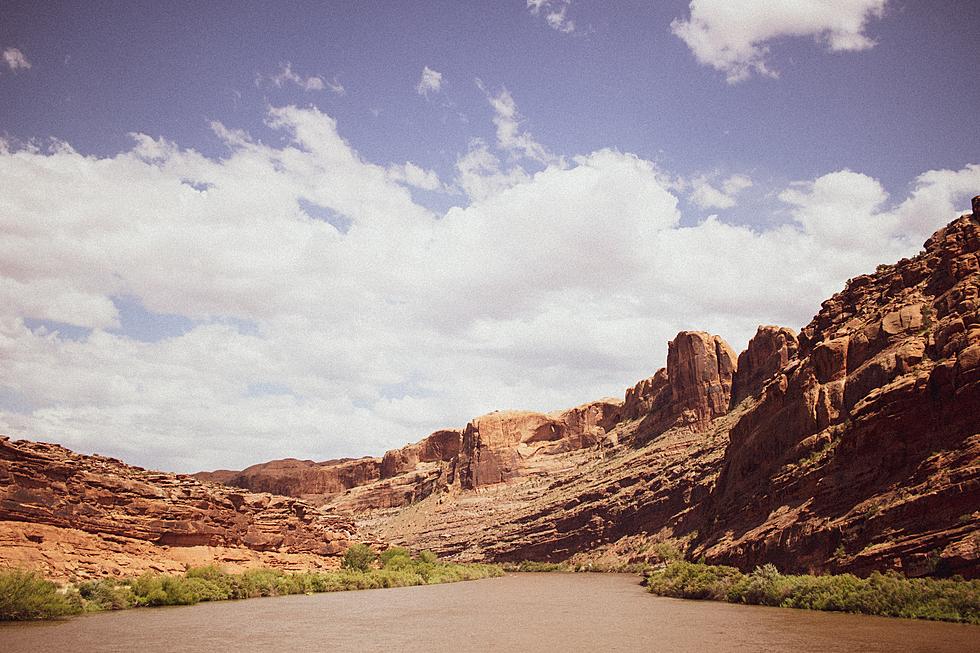
Western Drought: Down, But Not Out
Take a look at the latest map from the U.S. Drought Monitor. It was released today.
As you can see, there is much to be cautiously optimistic about. Only a small portion of the state, some of which is here in Iron County, is listed as Moderate Drought. The only other condition listed in our state are areas considered Abnormally Dry. Outside of those areas much of the state is enjoying no intensity related to drought.
We could say, what a difference a year makes when a map posted from last year would have shown most of the state under extreme and exceptional drought conditions. But it would be very premature to celebrate the end of the drought. We still have a ways to go.
For the western region of the U.S. the U.S. Drought monitor reported for the week
The ongoing heatwave was impacting much of the Southwest into southern California over the last several weeks. Temperatures in the region were well above normal for most areas and some departures in the Southwest were 8-10 degrees above normal this week. Areas of northern Utah and Nevada as well as portions of western Wyoming had above-normal rainfall this week. Moderate and severe drought were expanded in Idaho as well as the north and western portions of Montana. Abnormally dry conditions expanded over southern and southwest Colorado with moderate drought introduced this week in south central Colorado. A vast expansion of abnormally dry conditions was made in Arizona into western New Mexico, with moderate and severe drought expanding over southern New Mexico. Moderate drought also expanded over northern and northwest New Mexico.
The ongoing effects of the drought in the western United States continues to be a concern, posing serious challenges to the region's environment, economy, and communities. Droughts are natural phenomena, but their intensity and duration have been exacerbated by climate change, leading to prolonged and severe water scarcity.
One of the most significant impacts of the drought is on water resources. Major rivers and reservoirs that supply water to millions of people for drinking, agriculture, and industrial purposes are experiencing historically low levels. The Colorado River, for instance, which serves as a critical water source for several states, has seen reduced flows, leading to water rationing and potential conflicts over allocation.
Agriculture, a vital sector in the region, has been severely affected by the drought. Farmers face water shortages and rising costs, leading to reduced crop yields and economic losses. Ranchers also struggle to find sufficient water and forage for their livestock, resulting in livestock reduction and economic hardships for rural communities.
The drought's impact on the environment is equally concerning. Depleted water bodies can harm aquatic ecosystems, threatening fish populations and the overall balance of the ecosystem. Additionally, the dry conditions increase the risk of wildfires, which have become more frequent and destructive in recent years, leading to property damage, loss of natural habitats, and human casualties.
Furthermore, the drought exacerbates water scarcity issues for urban areas, with cities implementing strict water conservation measures. Residents are encouraged to reduce water usage, impacting daily life and necessitating innovative water management solutions.
The tourism and recreation industries have also felt the effects of the drought. Popular recreational areas such as lakes and rivers attract fewer visitors due to low water levels, impacting local economies that rely heavily on tourism revenue.
Addressing the ongoing drought requires a multi-faceted approach. Governments must invest in water infrastructure, promote water conservation and efficiency measures, and encourage the adoption of sustainable agricultural practices.
And we must do our part. We should be conservative with our use of water and take what measures we can to conserve. This might be a good time to take a personal “water inventory” to see where we can make more efficient use of water.
And, while some people may totally reject this option, if we are challenged to invoke the blessings of Providence to help improve our water supply, I believe people of faith should petition for the moisture.
I think I could easily argue that this last winter, those prayers were answered.
If you wan to see the counties in Utah still most effected by drought check out this article from Stacker.
“90-Minute Movies” On Netflix
More From KSUB 590/107.7









